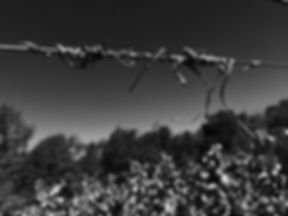What to Know About Older Champagne
- Melissa L. Smith
- May 17, 2022
- 4 min read
This story, in one form or another, has been told countless times over the last 18 years, and the memory of it makes it seem as if it were yesterday. I've even been told it's going to be published in an upcoming book about Champagne by Kelly White, which is at the same time an honor and a facepalm moment.

When I was a baby somm (actually I was working as the Chef de Cuisine and the Wine Steward at the time), one of our guests ordered a bottle of Perrier-Jouet Belle Epoque. The bottle had been sitting upright in the old soda fridge in full exposure to the bright light, and the hum and vibration of the refrigeration unit for god knows how long. Having been classically trained as a sommelier, but still only about three years since I'd turned 21, I presented the bottle to the guests, then went about carefully removing the foil. The dining room in this exclusive resort in the Bitterroot Valley was packed with guests at every table. The sun was setting, Micky the resident moose was drinking in the pond outside, and the smells of the multi course menu filled the air. I held the bottle at the customary 45 degree angle, gently turned the base of the bottle...and the next thing I knew the bottle shot out of my hand, hit the carpeted floor, and sprayed my guests. I was left with a cork in my hand that had not mushroomed like every other bottle I had witnessed in my many years of drinking and opening bubbles. My jaw dropped, the guests were justifiably stunned (and soaked), and my only retort was, "Well, please know that you have been showered in our finest Champagne."
I don't remember much after that, but I always warn my guests to not only store Champagne properly (which would have prevented this for sure), but to use extra caution when opening up older bottles of bubbles, as the cork likely will not expand and slow down its exit.
This of course has resulted in some collectors generously handing over these potential weapons as they didn't want them getting into the hands of their teenagers, and many dumped bottles.
When aged properly Champagne can be extraordinary. Something akin to an effervescent Sherry in some cases. I tend to get almond skins, forest mushrooms, and Fall leaves in many of them, and then the layers keep coming in waves. The complexity can be astounding, and the pairing potential much greater once you have a couple of decades on them. My absolute favorite pairing was at Commis restaurant in 2014. Chef James Syhabout. I had brought in a bottle of 1990 Veuve Clicquot La Grande Dame, and we had it with a savory oat risotto. Steel cut oats were cooked in a pork stock with white wine and shallots, mounted with butter, served with seared pork belly which was brined in sugar and salt, sous-vide then pan seared, and dusted with candy cap mushroom powder. It blew my mind. The umami in the wine and the risotto, the similar nutty characteristics and mushroom notes, and then the contrast of the hot dish and the cold sparkling wine resulted in one of the best dining experiences that I can remember.

Older Champagnes are not meant to be enjoyed as an aperitif. You likely will not want to pair them with fresh oysters, but perhaps oysters broiled with a layer of cream, roasted garlic, and Parmesan. Skip the sushi, and instead explore miso marinated salmon. Swap out port with the cheese course, and pour a nutty older Champagne instead.
A few more tips:
Always have a backup bottle on hand. Champagne can be one of the most tricky wines to age, and many have not been stored properly, resulting in a very disappointing experience. People will still be thirsty and want to celebrate.
Do not age non-vintage Champagne. They are not designed to age, and are nearly impossible to identify the year they were released. Best case scenario they are interesting but worthless, worst case scenario you have to *carefully* open and dump every bottle. (I just did this with 28 cases of wine, but more on that at a later date).
If you are given, or purchase, a special bottle of Champagne to be enjoyed on a momentous occasion sometime in the future, please be sure to store it properly for the entirety of its life. I cannot tell you how many people that I know that splurged on a bottle of Dom Perignon, keeping it in its original gift box (OGB), and storing it under their bed or on the mantle until their child turns 21, or they have reached a marriage milestone. Trust me, you don't even want to be in the same house after that smell has been dumped down the drain.
wine appraiser wine appraiser wine appraiser wine appraiser wine appraiser wine appraiser wine appraiser wine appraiser wine appraiser wine appraiser wine appraiser wine appraiser
wine appraiser wine appraiser wine appraiser wine appraiser wine appraiser wine appraiser wine appraiser wine appraiser wine appraiser wine appraiser wine appraiser wine appraiser
